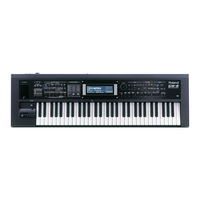Roland Workstation GW-8 Manuals
Manuals and User Guides for Roland Workstation GW-8. We have 5 Roland Workstation GW-8 manuals available for free PDF download: Owner's Manual, Supplementary Manual, Quick Manualbook, Release Note, Implementation Manual
Roland Workstation GW-8 Owner's Manual (112 pages)
Workstation
Brand: Roland
|
Category: Electronic Keyboard
|
Size: 6 MB
Table of Contents
Advertisement
Roland Workstation GW-8 Supplementary Manual (48 pages)
Workstation
Brand: Roland
|
Category: Electronic Keyboard
|
Size: 2 MB
Table of Contents
Roland Workstation GW-8 Quick Manualbook (39 pages)
Workstation
Brand: Roland
|
Category: Electronic Keyboard
|
Size: 2 MB
Table of Contents
Advertisement
Roland Workstation GW-8 Release Note (32 pages)
Operating System Version 2.00
Brand: Roland
|
Category: Electronic Keyboard
|
Size: 6 MB
Table of Contents
Roland Workstation GW-8 Implementation Manual (11 pages)
Midi Implimentation
Brand: Roland
|
Category: Electronic Keyboard
|
Size: 0 MB




